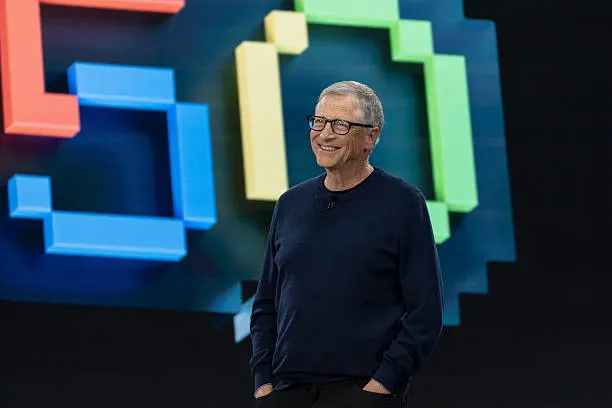Microsoft’s 2025 Mass Layoffs: Even AI Director Wasn’t Spared
In a move that has sent ripples through the global tech ecosystem, Microsoft has undertaken one of its largest workforce reductions since 2023. While the headlines cite a layoff of around 6,000 employees—roughly 3% of the company’s global workforce—the true shock lies in the composition and depth of the affected roles. Microsoft software engineers, a cornerstone of Microsoft’s technological dominance, have been one of the hardest-hit departments where employees have been laid off.

These layoffs are not merely numbers on a balance sheet; they are reflective of the shifting priorities of one of the most powerful tech companies in the world. The company’s transition into the next generation of artificial intelligence (AI) and enterprise services is accelerating, and this pivot is reshaping internal structures in ways many did not foresee.
Let’s take a deep dive into what triggered this massive wave of layoffs, who it affects, and what it signals for the broader technology sector.
A Brutal Spring: The Layoffs Unfold
The news broke in early May 2025. Microsoft confirmed that it would be cutting around 6,000 positions globally, spanning a wide range of functions. According to public filings and local WARN notices (Worker Adjustment and Retraining Notification Act), nearly 2,000 of these positions were in Washington State alone—the company’s home turf.
Out of these, a substantial proportion were Microsoft software engineers, followed closely by product and program managers. An additional 122 employees were laid off from the Bay Area offices, covering similar job categories. These weren’t entry-level positions either; many of those affected held senior and mid-level titles, suggesting that the layoffs were strategic rather than performance-based in most cases.
This restructuring followed Microsoft’s prior trend: the company also made significant cuts in 2023, eliminating 10,000 jobs as part of cost-cutting and business realignment measures. However, the 2025 layoffs seem more targeted and thematic, aimed at “flattening” the organizational structure.
The Targets: Software Engineers, Managers, and Product Teams
A striking pattern emerged from the layoff data—software engineering teams bore a significant portion of the cuts. Microsoft has long been synonymous with robust software development. From Windows OS and Office 365 to Azure cloud services and GitHub, software engineering is the company’s beating heart.
However, this round of layoffs revealed that not even this core competency is immune to restructuring. Redundant roles in legacy software projects, transitions to automation, and a leaner, AI-first development model have collectively reduced the need for large, distributed software engineering teams.
Also in the crosshairs were middle and senior managers. Business Insider reported that Microsoft is actively working to “flatten” its management layers. This involves reducing the number of managers per employee and creating a broader “span of control,” a term used to describe how many direct reports a manager oversees. This streamlining is aimed at improving speed, accountability, and reducing bureaucratic delays in decision-making—an increasingly critical factor in AI product rollouts.
Realigning Priorities: Why AI Is at the Center
Behind the layoffs is a force much larger than budget constraints or quarterly earnings. Microsoft’s pivot to AI is rewriting its internal hierarchy and redefining what roles are considered essential.
Microsoft is one of the biggest corporate backers of AI innovation. Its investment in OpenAI and its aggressive incorporation of AI capabilities into products like Microsoft Copilot, Azure AI, and Dynamics 365 is reshaping workflows across industries. As of fiscal 2025, Microsoft is reportedly allocating over $80 billion in AI infrastructure, research, and cloud integration.
Such a massive investment in AI is not just about building new tools; it’s about re-engineering how Microsoft functions internally. The company is automating several of its internal processes, including coding assistance, bug detection, performance testing, and customer support, all powered by AI systems.
Consequently, the need for traditional software engineering roles—particularly those focused on maintenance, testing, and backend infrastructure—has decreased. These tasks are increasingly being automated, outsourced, or handed over to more agile, cross-functional teams that specialize in AI integration.
Employee Voices: Shock, Grief, and Uncertainty
What made the layoffs particularly impactful was the suddenness with which they were executed. Several affected employees took to social media platforms like LinkedIn and X (formerly Twitter) to express their surprise, confusion, and grief.
One of the most talked-about exits was that of Gabriela de Queiroz, a well-respected Director in Microsoft’s AI division. Her emotional farewell post resonated deeply in the tech community, as she reflected on the volatility of the industry and the fragility of job security, even for high-performing teams. “No matter how hard you work or how much you care,” she wrote, “sometimes the business moves in a direction that doesn’t include you.”
Another disturbing detail came from insider reports that not all affected employees were offered severance packages. Some were let go immediately based on “performance reviews,” without extended healthcare benefits or transition assistance. Internal termination letters revealed that future job applications to Microsoft would consider the reason for the previous termination—a clause that may affect the professional reputations of laid-off staff.
This performance-based layoff model has sparked a debate around corporate transparency, fairness, and the impact of forced rankings in employee evaluation systems.
Market Performance vs. Human Cost
What’s perhaps most paradoxical about these layoffs is that they come during a time of robust financial performance. Microsoft recently posted strong earnings, driven largely by cloud services, enterprise licensing, and burgeoning AI tools.
Analysts point out that the layoffs are not a reflection of financial distress but of strategic realignment. The company is repositioning itself to dominate the next era of enterprise technology, where AI is expected to reshape everything from customer service and HR to cybersecurity and software development.
Yet, for those on the ground—particularly software engineers who built the systems that power Microsoft’s global dominance—the shift feels like a betrayal. Layoffs at a time of profit can come across as ruthless efficiency rather than necessity.
A Broader Trend Across Tech
Microsoft is far from alone. The layoffs are part of a broader recalibration across the tech industry. Amazon, Google, Meta, Salesforce, and even startups like Stripe and Dropbox have also downsized their software teams in favor of AI investment and automation.
What used to be a gold standard career—software engineering—is facing an identity crisis. Developers now find themselves needing to rapidly reskill, often shifting toward AI, data science, cybersecurity, or cloud infrastructure roles. The ability to adapt to this evolving landscape will likely determine career longevity.
This shift is also sparking new discussions around ethical layoffs, automation’s impact on jobs, and the role of upskilling in corporate responsibility.
What Comes Next for Microsoft?
While the layoffs are painful, they are not without a blueprint. Microsoft’s long-term strategy seems increasingly clear:
- Consolidate Software Development: Reduce redundancy in software projects by merging teams and eliminating duplicate roles.
- Prioritize AI: Centralize investment and manpower around AI-powered services and platforms.
- Streamline Management: Remove layers of middle management to create faster, flatter decision-making hierarchies.
- Focus on Strategic Cloud Growth: Continue investing in Azure and its AI-adjacent services.
- Reinvent Office Productivity: Tools like Microsoft Copilot are set to redefine work within the Office suite and Windows.
In the short term, these measures might improve operating margins and product agility. However, the long-term risks include potential skill gaps, lowered employee morale, and the challenge of maintaining institutional knowledge after large-scale departures.
Lessons for the Tech Workforce
The 2025 Microsoft layoffs serve as a wake-up call to the global tech community. Job security in tech can no longer be taken for granted, even at the most iconic and historically stable firms.
Software engineers and technical professionals must now:
- Stay current: AI, cybersecurity, and cloud infrastructure are fast becoming the new “core skills.”
- Reskill regularly: Continuous learning is no longer optional—it’s a survival strategy.
- Build a personal brand: Online portfolios, GitHub activity, and public speaking can act as insurance against market instability.
- Understand business strategy: Engineers who grasp business value are more likely to pivot with their companies.
Conclusion: The Cost of Progress
Microsoft’s 2025 layoffs mark a pivotal moment in the company’s journey and the broader history of modern technology. As the world transitions into an AI-first future, traditional roles are being questioned, restructured, or outright eliminated.
While the strategic rationale behind the layoffs is clear, the human cost cannot be ignored. Thousands of talented engineers, managers, and analysts are now reevaluating their place in an industry that is both growing and shrinking at once.
For Microsoft, the challenge will be maintaining its culture of innovation and employee trust while chasing exponential growth. For the rest of us, the lesson is simple: In the age of AI, adaptability is the new job security.












